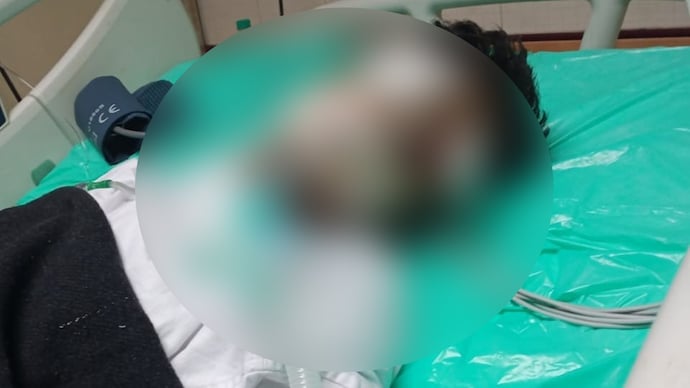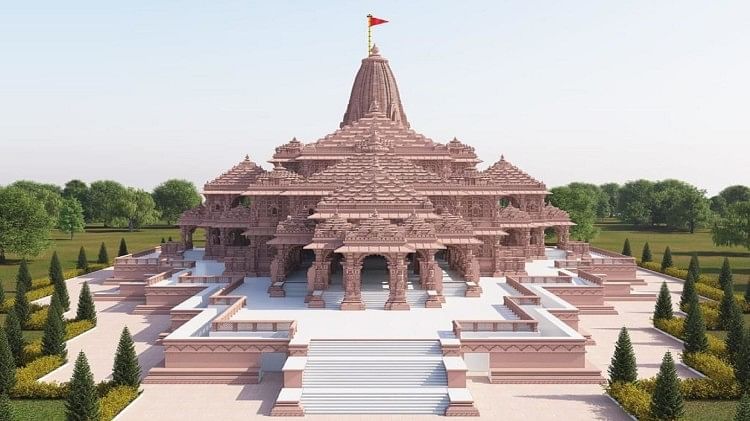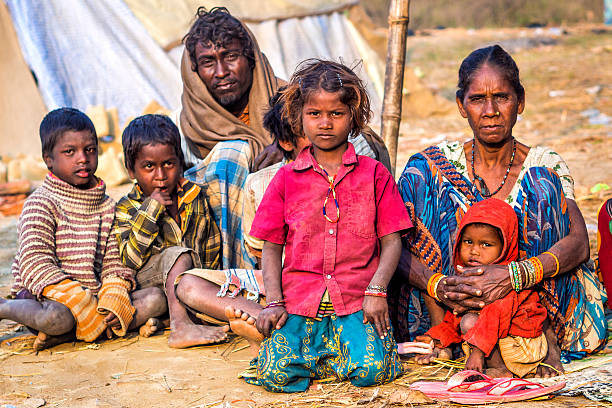State Of Health Care And Hospitals In Ram Rajya Uttar Pradesh, A State Building The World’s Largest Temple Cannot Maintain Its Hospitals?!
In the heart of Uttar Pradesh, a twisted record unfolds—one where the healthcare system languishes in the shadows, plagued by rat-infested mortuaries and a stark scarcity of essential resources and, on the other hand, whopping amounts being spent on building the world's largest temple. This is not just a tale of paradox; it's a scathing critique of a government seemingly more adept at funding monumental projects than addressing the fundamental needs of its people. Welcome to Uttar Pradesh, where temples rise and healthcare falls.

In the disturbing Uttar Pradesh‘s paradoxical governance, the stark dissonance between grandeur and neglect echoes loud and clear.
As the construction cranes tirelessly work to complete the opulent Ram Mandir, the state’s healthcare facilities remain mired in a grim reality of rat-infested mortuaries and insufficient resources.
The tale is not merely one of the contrasting priorities; it’s a damning indictment of a government that seems to have lost sight of its primary obligation—to safeguard the well-being of its people.

Rat-infested Healthcare Is The Grim Reality In Uttar Pradesh
In the dreadful tale of healthcare horrors unfolding in Uttar Pradesh, the spotlight falls on Lalitpur, where even the sanctity of a mortuary is not spared from the ghastly antics of rodents.
Anubha, a 22-year-old alleged suicide victim, was at the mercy of rats in the Nehru Nagar mortuary.
The police, in their infinite wisdom, decided a stretcher on the ground was an appropriate resting place for her body, ensuring that a timely autopsy was just a distant dream, especially on a holiday.
When her family arrived on Monday, they were greeted not by the somber scene of an autopsy but by the gruesome evidence of rat bites on Anubha’s face and body.
As the horror unfolded, Anubha’s grieving family took their rightful right, protesting against the callous authorities who allowed this nightmarish event to transpire.
A three-member committee, comprising Dr. Virendra Singh, RN Soni, and Avnosh Agnihotri, was hastily assembled to investigate the incident; however, it remains to be seen whether their expertise in the culinary arts of rat bites matches their investigatory prowess.
Anubha’s family, having already endured the tragedy of her alleged suicide, is now burdened with the grotesque image of her violated corpse.
The mortuary in Nehru Nagar, established five years ago, boasts seven freezers, of which three are conveniently dysfunctional; this nugget of information, combined with the fact that four to five autopsies are performed daily, paints a vivid picture of the state of affairs in this house of the dead.
However, is this just one incident? Sadly, no!

A few months ago, Budaun reported the grotesque narrative with its own horror story.
A seriously injured patient in the ICU of a government hospital fell victim to rat bites, courtesy of hospital staff negligence. This unfortunate soul found no refuge from rodents even as he was slipping in and out of consciousness; his brother, unfortunately, discovered the sad state of affairs and the painful aftermath of rat bites.
In yet another cruel twist (incident), the hospital’s culinary offering to patients is not the nutritional post-natal care one might expect but a diet of roti and dal—perfectly seasoned with the presence of rats that flit in and out of patient rooms.
But the horror doesn’t stop there; it extends to many health centers in Uttar Pradesh that boast a cornucopia of issues – from a shortage of medicines, ambulances, professionals, and even sanitary napkins; clearly, the health and well-being of patients play second fiddle to the more pressing matters.

Skewed Priorities?
The stark contrast between the colossal expenditures on the construction of the Ram Mandir in Ayodhya and the deplorable state of healthcare facilities in Uttar Pradesh raises profound questions about the state’s priorities.
As of March 31, 2023, the Shri Ram Janmabhoomi Teerth Kshetra Trust has spent a staggering 900 crore rupees on the temple’s construction, with an additional 3,000 crore rupees comfortably nestled in their bank accounts.
This monumental project, undertaken by the Larsen & Toubro group, boasts an estimated total cost of 18,000 crore rupees, scheduled for completion on January 24, 2024.
As the trust eagerly awaits foreign funds, having applied for permission to receive contributions in foreign currency, one cannot help but wonder about the irony of a state government pouring astronomical resources into a religious structure while basic amenities like hospitals suffer.
The trust has successfully garnered 3,200 crore rupees from citizens and organizations in India, creating a financial spectacle that stands in stark contrast to the dilapidated state of healthcare infrastructure in the state.

The trust’s substantial financial backing, coupled with the enthusiasm of citizens contributing to the cause, paints a picture of resounding success in the realm of religious construction.
In the same breath, the dismal reality of Uttar Pradesh’s healthcare system comes to light.
A state boasting a population of 252,121,400, making it the most populous country subdivision globally, appears to be grappling with skewed priorities; home to 16.5% of India’s total population, the growth rate in Uttar Pradesh stands at 1.96% annually.
With the last census conducted in 2011 and the upcoming census postponed until 2024, the state’s population burgeons unchecked. Yet, the allocation of resources remains puzzling, as a state investing billions in religious edifices struggles to meet the fundamental needs of its people.
This begs the question – How can a state government, entrusted with the welfare of its citizens, justify such lopsided resource distribution?
While the trust accumulates billions for the construction of a temple, the healthcare system languishes with rat-infested hospitals, insufficient medicines, and a dearth of sanitary napkins. The need for basic amenities, a cornerstone of responsible governance, seems to be eclipsed by the grandeur of religious undertakings.
As the construction cranes continue their dance in Ayodhya, it becomes increasingly evident that the discrepancy between opulence and neglect is not merely financial but a reflection of skewed priorities.

In a state where taxpayers contribute significantly, the lack of adequate resources allocated to essential services poses a grave question about the government’s commitment to its people’s well-being.
The narrative of Uttar Pradesh, oscillating between the grandeur of a temple and the squalor of healthcare facilities, compels citizens to reflect on the essence of governance.
As the Ram Mandir approaches completion, it remains to be seen whether the state will address the pressing needs of its people with the same fervor it devotes to religious undertakings – the glaring question persists, Can the same level of zeal and financial prowess be redirected towards the state’s healthcare infrastructure?
The citizens of Uttar Pradesh, facing the brunt of inadequate medical facilities, yearn for a government that places their basic needs on a pedestal equal to that of religious structures.
In the face of this paradox, the choice is clear—will Uttar Pradesh continue down the path of skewed priorities, or will it recalibrate, recognizing that the true measure of governance lies in addressing the pressing needs of its people?

The Last Bit, As the temple nears completion, the state stands at a crossroads, where the echoes of rat-infested hospitals serve as a reminder that grandiosity alone cannot replace the essential services that form the backbone of a responsible government.
The citizens await a future where opulent projects do not overshadow healthcare and where their well-being takes precedence over monuments of stone.
The recent incidents of rat attacks in government hospitals show the desperate need for stringent safety standards, enhanced hygiene practices, and preventive measures.
Patients and their families should not have to fear rodent-related health hazards when seeking medical care. It is high time for government authorities, hospital administrators, and healthcare staff to collaborate and address this critical issue by improving infrastructure, promoting cleanliness, and raising awareness about rat infestations.
In a state where taxpayers are burdened with high contributions, the question is – Why are we paying such exorbitant taxes if government hospitals cannot provide the medical care that citizens truly deserve?




